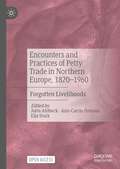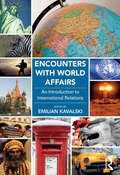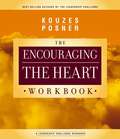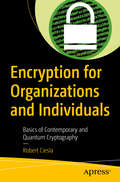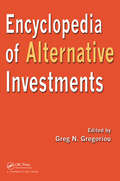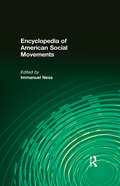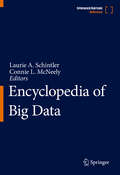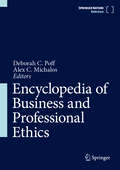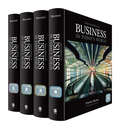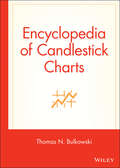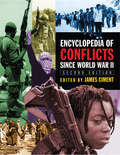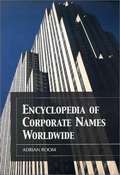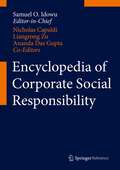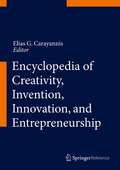- Table View
- List View
Encounters and Practices of Petty Trade in Northern Europe, 1820–1960: Forgotten Livelihoods
by Jutta Ahlbeck Ann-Catrin Östman Eija StarkThis open access book uncovers one important, yet forgotten, form of itinerant livelihoods, namely petty trade, more specifically how it was practiced in Northern Europe during the period 1820–1960. It investigates how traders and customers interacted in different spaces and approaches ambulatory trade as an arena of encounters by looking at everyday social practices. Petty traders often belonged to subjugated social groups, like ethnic minorities and migrants, whereas their customers belonged to the resident population. How were these mobile traders perceived and described? What goods did they peddle? How did these commodities enable and shape trading encounters? What kind of narratives can be found, and whose? These questions pertaining to daily practices on a grass-root level have not been addressed in previous research. Encounters and Practices embarks on hidden histories of survival, vulnerability, and conflict, but also discloses reciprocal relations, even friendships.
Encounters with World Affairs: An Introduction to International Relations (Worlding Beyond The West Ser.)
by Emilian KavalskiThis book is designed to familiarise students with leading International Relations (IR) theories and their explanation of political events, phenomena, and processes which cross the territorial boundaries of the state. Thus, students will be exposed to the interplay between power, interest, ideas, identity, and resistance, in explaining continuity and change in international relations. Developed to provide students with the analytical tools and intellectual frameworks needed to understand the behaviour of different international actors in contemporary global affairs. This textbook responds to the challenges of a dynamic job market by assisting students to gain both thorough theoretical knowledge and training them to apply this knowledge to real world problems. In short, this textbook delivers: A comprehensive and interdisciplinary approach to the examination of national, regional and global trends in politics, economics and socio-cultural developments allowing students to understand: ¢ the practice and theory of contemporary international relations ¢ the politics, culture, history, and economies of different regions around the world ¢ the role played by international interactions, culture, and government in local, national, and global settings. Equipping students with the proficiency: ¢ to understand and interpret the dynamics, patterns, and issues of global affairs ¢ to know how to get more information about particular questions ¢ to evaluate that information independently and effectively. To these ends, the textbook provides a number of features that will appeal to students and avoids overwhelming students with chapters on topics which (in practice) are rarely on courses, while nonetheless providing a comprehensive overview of the field. Introduces students to the main debates, topics, and terms in the field and allows them to decide which they would like to focus on in their further studies.
Encouraging Foreign Direct Investment: The key factors for long-term investment sustainability (SpringerBriefs in Energy)
by Tareq MahbubThis book identifies and investigates the determinants that influence investment decision-making for conducting foreign direct investment (FDI) in Bangladesh’s power sector. This book is organized around six core themes. These are: Bangladesh’s vision to become a middle-income country by 2021 and have universal power for all; an overview of the benefits and costs of FDI from a host nation’s perspective; an outlook of Bangladesh’s power sector starting from the years 1994-2008 through 2011-2015 to 2016-2020 and beyond; the key factors that encourage foreign investors to conduct FDI in the Bangladeshi power sector subsumed under four broad categories of investment prospects namely, regulatory, economic and financial, political and social; the key barriers that deter FDI in the Bangladeshi power sector; and policy implications for long-term investment sustainability in the power sector.The main arguments posited in this book are: regulatory aspects are the most important for firms when conducting FDI in the power sector; land acquisition is a perineal problem that continues to hamper the development of large-scale power projects; there is a need for a transparent and competitive selection process to improve transparency and accountability in private power procurement; and more exploration of onshore and offshore gas fields with the extension of gas transmission networks be enhanced that ensure a regional balance of primary energy supply (gas) for setting up additional gas-based power plants in the country.
Encouraging The Heart Workbook
by James M. Kouzes Barry Z. PosnerGetting things done in today's workplace is hard work. Employees become exhausted, frustrated, and sometimes entirely disenchanted-and often, they are tempted to simply give up. But the research conducted by Jim Kouzes and Barry Posner over the last two decades clearly shows that successful leaders find ways to combat these negative feelings by encouraging the hearts of their team members. This workbook, based on the model presented in the bestselling book Encouraging the Heart, guides readers through seven essentials of encouraging the heart: set clear standards, expect the best, pay attention, personalize recognition, tell the story, celebrate together, and set the example. The authors also provide a 21-question self-assessment to help leaders determine how they are doing and where they should focus their development efforts.
Encouraging the Heart: Igniting Purpose and Providing Meaningful Recognition (J-B Leadership Challenge: Kouzes/Posner)
by James M. Kouzes Barry Z. PosnerHuman-centered leadership insights from the leading experts on the subject In the newly revised second edition of Encouraging the Heart: Igniting Purpose and Providing Meaningful Recognition, renowned leadership experts and best-selling authors James Kouzes and Barry Posner deliver an incisive and practical playbook for leaders who want to inspire their followers to achieve extraordinary things. They've packed the book with real-world examples, practical ideas, and eye-opening advice drawn from over four decades of work with countless business leaders. Encouraging the Heart is not a book about incentive systems or reward programs. It goes beyond those things to discuss universal leadership principles that will help elevate your people to new levels of productivity, engagement, and performance. It's a hands-on roadmap containing behaviors, principles, practices, evidence, and examples that will form the foundation of a repeatable process you can put into place at your own organization. Inside the book you'll find strategies for: Setting clear standards aligned with your organization's purpose Paying attention to exemplary actions and telling memorable stories that motivate action and enact change Noticing exemplars of values and standards and publicly praising them with personalized feedback and appreciation that encourages others to live up to their example Setting a personal example of meaningful ways to recognize others and celebrate values and victories Encouraging the Heart is a must-read for leaders of all kinds, regardless of position or function, at organizations of all sizes, in the public and private sectors who wish to help those around them realize their full potential.
Encryption for Organizations and Individuals: Basics of Contemporary and Quantum Cryptography
by Robert CieslaCryptography and encryption aren't just for geeks and spies—they’re also part of our daily lives. This book enlightens you with the basics of digital cryptography and covers the must-do practices organizations need to implement when it comes to fending off data theft and eavesdroppers. You will uncover the concepts of digital encryption and examine key digital encryption algorithms and their various applications. Gauging cryptography from an enterprise perspective, you will get an in-depth look at common attacks that can occur in your systems and lean how to counter themMoving on to quantum computing, you will discover how it differs from the current computing paradigm and understand its potential for the future. After clearing the basics, you will take a close look at how quantum computers work in practice. Shifting focus to quantum cryptography, you will learn more about quantum key distribution (QKD) and how it differs from present-day encryption methodologies. You will also consider the current implementations of QKD, including distribution systems by SwissQuantum and QKD-distribution networks provided by the DARPA Quantum Network. Ultimately, you will learn the means of defending against cryptographic attacks in the up-and-coming quantum age, such as utilizing zero-knowledge proof (ZKP) systems.Deepen your knowledge of cryptographic concepts and be introduced to the new paradigm of quantum cryptography with this book. What You Will LearnAppreciate how digital encryption algorithms workSecure your infrastructure from cryptographic attacksUnderstand the basics of quantum information scienceDiscover how cryptography relates to quantum computingImplement Quantum Key Distribution (QKD) Who This Book Is ForThis book is aimed at readers who have an interest in both well-established and up-and-coming types of cryptography, as well as members of organizations to whom privacy is a top priority.
Encyclopaedia Britannica (A)
by Jeffrey F. Rayport Thomas A. GeraceExamines the growth of the CD-ROM publishing industry and its impact on the Encyclopaedia Britannica Co., which chose to ignore it.
Encyclopedia of Alternative Investments
by Greg N. GregoriouA pioneering reference essential in any financial library, the Encyclopedia of Alternative Investments is the most authoritative source on alternative investments for students, researchers, and practitioners in this area. Containing 545 entries, the encyclopedia focuses on hedge funds, managed futures, commodities, and venture capital. It features
Encyclopedia of American Folklife: Communities, Cultures, And Identity Groups (Encyclopedia Of American Folklife Ser.)
by Simon J BronnerAmerican folklife is steeped in world cultures, or invented as new culture, always evolving, yet often practiced as it was created many years or even centuries ago. This fascinating encyclopedia explores the rich and varied cultural traditions of folklife in America - from barn raisings to the Internet, tattoos, and Zydeco - through expressions that include ritual, custom, crafts, architecture, food, clothing, and art. Featuring more than 350 A-Z entries, "Encyclopedia of American Folklife" is wide-ranging and inclusive. Entries cover major cities and urban centers; new and established immigrant groups as well as native Americans; American territories, such as Guam and Samoa; major issues, such as education and intellectual property; and expressions of material culture, such as homes, dress, food, and crafts. This encyclopedia covers notable folklife areas as well as general regional categories. It addresses religious groups (reflecting diversity within groups such as the Amish and the Jews), age groups (both old age and youth gangs), and contemporary folk groups (skateboarders and psychobillies) - placing all of them in the vivid tapestry of folklife in America. In addition, this resource offers useful insights on folklife concepts through entries such as "community and group" and "tradition and culture." The set also features complete indexes in each volume, as well as a bibliography for further research.
Encyclopedia of American Social Movements
by Immanuel NessThis four-volume set examines every social movement in American history - from the great struggles for abolition, civil rights, and women's equality to the more specific quests for prohibition, consumer safety, unemployment insurance, and global justice.
Encyclopedia of Big Data
by Connie L. McNeely Laurie A. SchintlerThis encyclopedia will be an essential resource for our times, reflecting the fact that we currently are living in an expanding data-driven world. Technological advancements and other related trends are contributing to the production of an astoundingly large and exponentially increasing collection of data and information, referred to in popular vernacular as “Big Data.” Social media and crowdsourcing platforms and various applications ― “apps” ― are producing reams of information from the instantaneous transactions and input of millions and millions of people around the globe. The Internet-of-Things (IoT), which is expected to comprise tens of billions of objects by the end of this decade, is actively sensing real-time intelligence on nearly every aspect of our lives and environment. The Global Positioning System (GPS) and other location-aware technologies are producing data that is specific down to particular latitude and longitude coordinates and seconds of the day. Large-scale instruments, such as the Large Hadron Collider (LHC), are collecting massive amounts of data on our planet and even distant corners of the visible universe. Digitization is being used to convert large collections of documents from print to digital format, giving rise to large archives of unstructured data. Innovations in technology, in the areas of Cloud and molecular computing, Artificial Intelligence/Machine Learning, and Natural Language Processing (NLP), to name only a few, also are greatly expanding our capacity to store, manage, and process Big Data. In this context, the Encyclopedia of Big Data is being offered in recognition of a world that is rapidly moving from gigabytes to terabytes to petabytes and beyond. While indeed large data sets have long been around and in use in a variety of fields, the era of Big Data in which we now live departs from the past in a number of key respects and with this departure comes a fresh set of challenges and opportunities that cut across and affect multiple sectors and disciplines, and the public at large. With expanded analytical capacities at hand, Big Data is now being used for scientific inquiry and experimentation in nearly every (if not all) disciplines, from the social sciences to the humanities to the natural sciences, and more. Moreover, the use of Big Data has been well established beyond the Ivory Tower. In today’s economy, businesses simply cannot be competitive without engaging Big Data in one way or another in support of operations, management, planning, or simply basic hiring decisions. In all levels of government, Big Data is being used to engage citizens and to guide policy making in pursuit of the interests of the public and society in general. Moreover, the changing nature of Big Data also raises new issues and concerns related to, for example, privacy, liability, security, access, and even the veracity of the data itself.Given the complex issues attending Big Data, there is a real need for a reference book that covers the subject from a multi-disciplinary, cross-sectoral, comprehensive, and international perspective. The Encyclopedia of Big Data will address this need and will be the first of such reference books to do so. Featuring some 500 entries, from "Access" to "Zillow," the Encyclopedia will serve as a fundamental resource for researchers and students, for decision makers and leaders, and for business analysts and purveyors. Developed for those in academia, industry, and government, and others with a general interest in Big Data, the encyclopedia will be aimed especially at those involved in its collection, analysis, and use. Ultimately, the Encyclopedia of Big Data will provide a common platform and language covering the breadth and depth of the topic for different segments, sectors, and disciplines.
Encyclopedia of Business and Professional Ethics
by Alex C. Michalos Deborah C. PoffThis encyclopedia, edited by the past editors and founder of the Journal of Business Ethics, is the only reference work dedicated entirely to business and professional ethics. Containing over 2000 entries, this multi-volume, major research reference work provides a broad-based disciplinary and interdisciplinary approach to all of the key topics in the field. The encyclopedia draws on three interdisciplinary and over-lapping fields: business ethics, professional ethics and applied ethics although the main focus is on business ethics. The breadth of scope of this work draws upon the expertise of human and social scientists, as well as that of professionals and scientists in varying fields. This work has come to fruition by making use of the expert academic input from the extraordinarily rich population of current and past editorial board members and section editors of and contributors to the Journal of Business Ethics.
Encyclopedia of Business in Today's World
by Charles Wankel2009 RUSA Outstanding Business ReferenceBusiness in today's world is increasingly diverse. Undertaking commerce, even by an individual, can mean working globally through a welter of new media with opportunities of all kinds rapidly appearing. The boundaries, scope, content, structures, and processes of a business activity can morph into completely different ones in the course of a project. Contemporary businesses, and certainly future businesses, find it incumbent upon them to fit within the requirements of environmental and economic sustainability of the others who inhabit our world. With more than 1,000 entries, the Encyclopedia of Business in Today's World is packed with essential and up-to-date information on the state of business in our world. Not only does it reflect where business is, it also conveys the trajectory of business farther into the 21st century. These four volumes provide clear overviews of the important business topics of our time, ranging from culture shock to currency hedging, political risk, offshoring, and transnational corporations. The wealth of topics represent an integrated vision by the editor of a perplexity of functions, technologies, and environmental factors. Key FeaturesProvides insight into the development and current business situation globally through articles on many individual countriesExamines the processes, responsibilities, and ethics of business in the global marketOffers entries written by experts from diverse fields Includes an appendix that looks at World Trade Organization statisticsPresents a vast range of topics, including key companies, business policies, regions, countries, dimensions of globalization, economic factors, international agreements, financial instruments, accounting regulations and approaches, theories, legislation, management practices and approaches, and much moreKey ThemesCompetitive ForcesCountriesCorporate ProfilesCultural EnvironmentsEconomics of International BusinessEconomic Theories of International BusinessEthics, Corruption, and Social ResponsibilityExport/Import StrategiesForeign Direct InvestmentGlobalization and SocietyHuman Resource ManagementInternational AccountingInternational FinanceInternational Monetary SystemInternational TradeLegal and Labor IssuesManagement and LeadershipManufacturing and OperationsMarketingPolitical EnvironmentsRegional Economic IntegrationSupranational and National OrganizationsThe Encyclopedia of Business in Today's World serves as a general, nontechnical resource for students, professors, and librarians seeking to understand the development of business as practiced in the United States and internationally.
Encyclopedia of Candlestick Charts
by Thomas N. BulkowskiFollowing in the footsteps of author Thomas Bulkowski's bestselling Encyclopedia of Chart Patterns--and structured in the same way--this easy-to-read and -use resource takes an in-depth look at 103 candlestick formations, from identification guidelines and statistical analysis of their behavior to detailed trading tactics. Encyclopedia of Candlestick Charts also includes chapters that contain important discoveries and statistical summaries, as well as a glossary of relevant terms and a visual index to make candlestick identification easy.
Encyclopedia of Chart Patterns
by Bulkowski Thomas N.In this revised and expanded second edition of the bestselling Encyclopedia of Chart Patterns, Thomas Bulkowski updates the classic with new performance statistics for both bull and bear markets and 23 new patterns, including a second section devoted to ten event patterns. Bulkowski tells you how to trade the significant events -- such as quarterly earnings announcements, retail sales, stock upgrades and downgrades -- that shape today?s trading and uses statistics to back up his approach. This comprehensive new edition is a must-have reference if you're a technical investor or trader. Place your order today. "The most complete reference to chart patterns available. It goes where no one has gone before. Bulkowski gives hard data on how good and bad the patterns are. A must-read for anyone that's ever looked at a chart and wondered what was happening. " -- Larry Williams, trader and author of Long-Term Secrets to Short-Term Trading
Encyclopedia of Chart Patterns (Wiley Trading)
by Thomas N. BulkowskiThe market's bestselling and most comprehensive reference on chart patterns, backed by statistics and decades of experience When the smart money trades the securities markets, they leave behind financial footprints. Combine enough footprints together and you have a trail to follow. That trail becomes what’s called a chart pattern. Encyclopedia of Chart Patterns, Third Edition expands upon Bulkowski's immensely popular Second Edition with fully revised and updated material on chart patterns. Whether you’re new to the stock market or an experienced professional trader, use this book as a reference guide to give you an edge. Within the pages of this book, you’ll learn how to identify chart patterns, supported by easy-to-understand performance statistics describing how well a pattern works, what the failure rate is, and what special quirks suggest better future performance. You’ll discover how often a stop loss order will trigger at various locations within a chart pattern, how the chart pattern’s performance has evolved over the past three decades, and how to profit from failure by trading busted patterns. This broadened and revised Third Edition offers investors the most comprehensive, up-to-date guide to this popular method of market analysis. Written by a leading expert on chart patterns, Tom Bulkowski, this edition includes revised statistics on 75 chart patterns including 23 new ones, with pictures and performance statistics, packaged within easy-to-read text. Gain essential knowledge of chart patterns and how they are used to predict price movements in bull and bear markets New tables include how often stops are hit, busted pattern performance, performance over the decades, and special pattern features Joining Tour, Identification Guidelines, Focus on Failures, Statistics, Trading Tactics and Sample Trade is Experience. It puts you in the passenger’s seat so you can share lessons learned from Bulkowski's trades This edition reports on statistics from nearly four times the number of samples used in the Second Edition and ten times the number in the First Edition The Encyclopedia of Chart Patterns, Third Edition further solidifies the reputation of this book as the leading reference on chart patterns, setting it far above the competition.
Encyclopedia of Computer Science and Technology: Volume 14 - Very Large Data Base Systems to Zero-Memory and Markov Information Source
by Allen Kent Jack Belzer Albert G. Holzman"This comprehensive reference work provides immediate, fingertip access to state-of-the-art technology in nearly 700 self-contained articles written by over 900 international authorities. Each article in the Encyclopedia features current developments and trends in computers, software, vendors, and applications...extensive bibliographies of leading figures in the field, such as Samuel Alexander, John von Neumann, and Norbert Wiener...and in-depth analysis of future directions."
Encyclopedia of Conflicts Since World War II
by James CimentThoroughly revised to include 25 conflicts not covered in the previous edition, as well as expanded and updated information on previous coverage, this illustrated reference presents descriptions and analyses of more than 170 significant post-World War II conflicts around the globe. Organized by region for ease of access, "Encyclopedia of Conflicts Since World War II, Second Edition" provides clear, in-depth explanations of events not covered in such detail in any other reference source. Including more than 180 detailed maps and 150 photos, the set highlights the conflicts that dominate today's headlines and the events that changed the course of late twentieth-century history.
Encyclopedia of Corporate Names Worldwide
by Adrian RoomEntries in this encyclopedia give the stories behind some 3,500 commercial names, mainly from America and Britain but including some from European countries.
Encyclopedia of Corporate Social Responsibility
by Nicholas Capaldi Samuel O Idowu Ananda Das Gupta Liangrong ZuThe role of Corporate Social Responsibility in the business world has developed from a fig leaf marketing front into an important aspect of corporate behavior over the past several years. Sustainable strategies are valued, desired and deployed more and more by relevant players in many industries all over the world. Both research and corporate practice therefore see CSR as a guiding principle for business success. The "Encyclopedia of Corporate Social Responsibility" has been conceived to assist researchers and practitioners to align business and societal objectives. All actors in the field will find reliable and up to date definitions and explanations of the key terms of CSR in this authoritative and comprehensive reference work. Leading experts from the global CSR community have contributed to make the "Encyclopedia of Corporate Social Responsibility" the definitive resource for this field of research and practice.
Encyclopedia of Creativity, Invention, Innovation and Entrepreneurship
by Elias G. CarayannisThe Encyclopedia of Creativity, Invention, Innovation, and Entrepreneurship (CI2E) is a four-volume electronic and print reference that will uniquely cover the broad spectrum of topics relating to the process of creativity and innovation, from a wide variety of perspectives (e.g., economics, management, psychology, anthropology, policy, technology, education, the arts) and modes (individual, organization, industry, nation, region). The project is scheduled to complete by the end of 2012, and will be comprised of some 300 topical entries, definitions of key terms and concepts, and 12-20 "keynote" or review essays, from a global array of researchers, business executives, policymakers, and artists, illuminating the many facets of creativity and innovation, and highlighting their relationships to such universal concepts as knowledge management, economic opportunity, and sustainability. The Editors are looking to generate some 75 definitions/entries of approximately 2,000-4,000 words apiece plus 3-5 longer (10-20 pp) essays for each section (Creativity, Invention, Innovation, and Entrepreneurship). The presentation style of the entries is informational/educational; the entries should describe, define, synthesize, and review a topic, rather than showcase original theoretical or empirical research findings. Entries may feature electronic supplementary materials, such as audio-visual presentations, and may be updated after initial publication, to reflect the most current information and insights. Please contact the Editors or see Guidelines for Authors for more detailed information.
Encyclopedia of Crisis Management
by Matt Statler K. Bradley Penuel Ryan HagenAlthough now a growing and respectable research field, crisis management—as a formal area of study—is relatively young, having emerged since the 1980s following a succession of such calamities as the Bhopal gas leak, Chernobyl nuclear accident, Space Shuttle Challenger loss, and Exxon Valdez oil spill. Analysis of organizational failures that caused such events helped drive the emerging field of crisis management. Simultaneously, the world has experienced a number of devastating natural disasters: Hurricane Katrina, the Japanese earthquake and tsunami, etc. From such crises, both human-induced and natural, we have learned our modern, tightly interconnected and interdependent society is simply more vulnerable to disruption than in the past. This interconnectedness is made possible in part by crisis management and increases our reliance upon it. As such, crisis management is as beneficial and crucial today as information technology has become over the last few decades. Crisis is varied and unavoidable. While the examples highlighted above were extreme, we see crisis every day within organizations, governments, businesses and the economy. A true crisis differs from a "routine" emergency, such as a water pipe bursting in the kitchen. Per one definition, "it is associated with urgent, high-stakes challenges in which the outcomes can vary widely (and are very negative at one end of the spectrum) and will depend on the actions taken by those involved." Successfully engaging, dealing with, and working through a crisis requires an understanding of options and tools for individual and joint decision making. Our Encyclopedia of Crisis Management comprehensively overviews concepts and techniques for effectively assessing, analyzing, managing, and resolving crises, whether they be organizational, business, community, or political. From general theories and concepts exploring the meaning and causes of crisis to practical strategies and techniques relevant to crises of specific types, crisis management is thoroughly explored. Features & Benefits: A collection of 385 signed entries are organized in A-to-Z fashion in 2 volumes available in both print and electronic formats. Entries conclude with Cross-References and Further Readings to guide students to in-depth resources. Selected entries feature boxed case studies, providing students with "lessons learned" in how various crises were successfully or unsuccessfully managed and why. Although organized A-to-Z, a thematic "Reader's Guide" in the front matter groups related entries by broad areas (e.g., Agencies & Organizations, Theories & Techniques, Economic Crises, etc.). Also in the front matter, a Chronology provides students with historical perspective on the development of crisis management as a discrete field of study. The work concludes with a comprehensive Index, which—in the electronic version—combines with the Reader's Guide and Cross-References to provide thorough search-and-browse capabilities. A template for an "All-Hazards Preparedness Plan" is provided the backmatter; the electronic version of this allows students to explore customized response plans for crises of various sorts. Appendices also include a Resource Guide to classic books, journals, and internet resources in the field, a Glossary, and a vetted list of crisis management-related degree programs, crisis management conferences, etc.
Encyclopedia of Development Methods
by Andrzej HuczynskiThis title was first published in 2001. This title was first published in 2001. The core of this thoroughly revised book is a directory of more than 700 methods. Each entry typically comprises an explanation, a bibliography, and cross-references. Other features include a review of different approaches to classifying the methods, and two valuable appendices; the first is to help practitioners analyse their methods; the second providing details of relevant books, journals and other information sources.
Encyclopedia of Education and Human Development
by Daniel Ness Stephen J. FarengaThis comprehensive and exhaustive reference work on the subject of education from the primary grades through higher education combines educational theory with practice, making it a unique contribution to the educational reference market. Issues related to human development and learning are examined by individuals whose specializations are in diverse areas including education, psychology, sociology, philosophy, law, and medicine. The book focuses on important themes in education and human development. Authors consider each entry from the perspective of its social and political conditions as well as historical underpinnings. The book also explores the people whose contributions have played a seminal role in the shaping of educational ideas, institutions, and organizations, and includes entries on these institutions and organizations. This work integrates numerous theoretical frameworks with field based applications from many areas in educational research.
Encyclopedia of Finance
by Cheng-Few Lee Alice C. LeeThe Encyclopedia of Finance, Second Edition, comprised of over 1000 individual definitions and chapters, is the most comprehensive and up-to-date resource in the field, integrating the most current terminology, research, theory, and practical applications. Showcasing contributions from an international array of experts, the revised edition of this major reference work is unparalleled in the breadth and depth of its coverage. Part I provides readers with a basic framework for getting up to speed quickly, and has been updated to include over 200 new terms and essays. Part II features 24 new chapters and offers a more in-depth look at the topic through key developments and findings. Part III has also been expanded through the addition of four new appendices. From "asset pricing models" to "risk management," the Encyclopedia of Finance, Second Edition, serves as an essential resource for academics, educators, and students.
